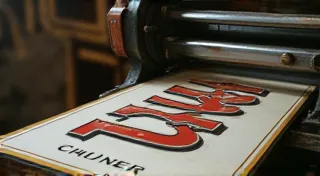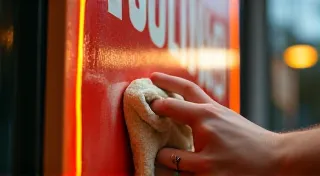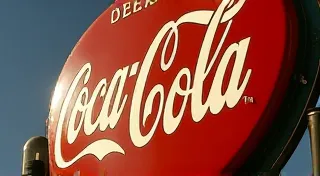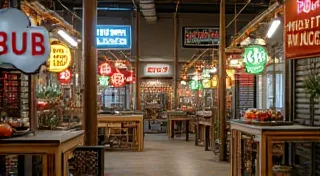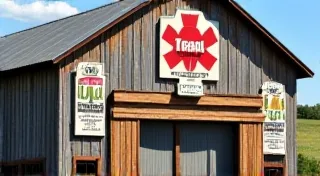Collecting Signs by Region: Local Brands and Advertising
For sign collectors, the thrill often extends beyond simply owning a piece of advertising history. It's about understanding the story behind it, the place it represents, and the brand it promoted. Regional advertising signs offer a particularly fascinating sub-niche within the broader world of sign collecting, revealing unique stories of local businesses and the communities they served. This article explores the appeal of collecting signs by region, highlighting the distinctive brands and advertising styles that characterized different areas.
The Allure of Regional Advertising
National brands are well-represented in the vintage advertising sign market, but regional signs hold a special charm. They’re often harder to find, making them more prized by collectors. These signs offer a direct link to the history of a specific locale, showcasing businesses that once thrived and contributing to a sense of place. A ‘Smith’s Dairy’ sign from Ohio tells a different story than a ‘Coca-Cola’ sign, and that difference is what draws many collectors in. They offer a glimpse into a time when local businesses were the backbone of communities. The physical material and construction of these signs often contribute to their unique appeal – particularly the durability of porcelain enamel advertising signs, which has allowed so many to survive the test of time.
The advertising styles themselves also tend to be distinct. While national brands often adhered to standardized campaigns, regional brands had more freedom to reflect the local culture and aesthetics. This can result in more creative and memorable designs. The visual landscape of these signs is often a captivating reflection of a place’s economic drivers and cultural identity, sometimes providing an unexpected window into the broader geographical story of lost advertising landscapes, as detailed in articles like The Cartographer's Palette: Mapping the Geography of Lost Advertising Landscapes.
Common Regional Sign Types and Brands
Let's examine a few examples of what you might find when collecting signs by region:
- Midwest: The Midwest was fertile ground for dairy and agricultural businesses, leading to a plethora of signs for creameries, feed mills, and implement dealers. Look for signs featuring imagery of cows, tractors, and farmers. Brands like “Foremost Farms” or “Prairie Farms” are good starting points. The design elements and color palettes employed often mirrored the prevailing artistic trends of the era, and the stories these signs tell reveal much about the economic and social fabric of the region.
- The South: Southern states frequently saw signs for bottling companies, soft drinks, and businesses catering to the agricultural economy. Think about brands specializing in cotton gins or lumber mills. The imagery used frequently tied into the natural resources and agricultural production that defined the region’s economy.
- The Northeast: The Northeast historically had a strong industrial base, reflected in signs for hardware stores, auto repair shops, and manufacturers. Look for signs promoting local breweries or mills. The durability and longevity of these signs, often crafted from sturdy materials, speaks to the industrial heritage of the region.
- The West: Western advertising often featured mining, ranching, and early automotive businesses. Think of signs for prospectors' supplies or local gas stations. The stark beauty of the Western landscape often found its way into the designs, creating a distinctive aesthetic.
Beyond these broad categories, researching specific states and counties can unearth true treasures. Local newspapers and historical societies are invaluable resources for identifying former businesses and their advertising campaigns. Understanding the visual decay and the evocative power of faded signage – sometimes presenting a chromatic ghost – can significantly enhance the appreciation of regional signs.
Identifying Regional Signs: Clues and Research
Identifying a regional sign isn't always straightforward. Here are some clues to look for:
- Company Name: This is the most obvious clue! Researching the company's history can help you pinpoint its location. Online databases and historical records can provide crucial details about a company's origins and activities.
- Imagery: Does the imagery depict a recognizable landmark or landscape? Identifying the geographical context depicted in the imagery is a key step in authenticating a sign.
- Typography: Certain font styles and design elements were common in specific regions during certain eras. Researching typographic trends can provide valuable clues.
- Manufacturing Marks: Sometimes, signs will have manufacturer's marks that indicate where the sign was produced. These marks can be invaluable for tracing the sign’s origins.
Don't be afraid to ask questions! Online forums and collector groups can be incredibly helpful in identifying signs. The passion and expertise within these communities can be a treasure trove of information.
The Value of Regional Signs
The value of regional signs varies widely. Rarity, condition, size, and desirability all play a role. Signs from obscure brands in excellent condition can command high prices, while more common signs might be more affordable. However, for many collectors, the true value isn't monetary; it's the story the sign tells and the connection it provides to a specific place and time. The subtle imperfections and the effects of weathering often contribute to the unique character and charm of these vintage artifacts. Examining the patterns of wear and tear can tell a story about the sign’s journey through time.
The collecting community appreciates more than just pristine examples. The faded colors and distressed surfaces often hold a certain melancholic beauty, offering a glimpse into a bygone era. The allure of these signs lies in their ability to evoke memories and emotions, transporting viewers to a different time and place.
Deeper Dive: The Social and Economic Context
Beyond their aesthetic appeal, regional advertising signs offer a unique window into the social and economic history of a region. They reflect the values, aspirations, and challenges faced by local businesses and communities. Analyzing the imagery, typography, and messaging on these signs can provide valuable insights into the cultural landscape of a particular time and place. For instance, signs promoting local dairy farms often reflect the importance of agriculture in the region’s economy, while signs advertising automotive repair shops provide a glimpse into the rise of the automobile and its impact on society. The stories these signs tell are often intertwined with the broader narratives of economic growth, social change, and technological innovation.
Furthermore, regional signs highlight the differences between localized businesses and larger, national brands. Local businesses often relied on personalized advertising and community engagement to build their customer base, while national brands employed standardized campaigns and mass marketing techniques. Examining these differences can shed light on the evolution of advertising and the changing dynamics of the marketplace.
As collecting shifts toward appreciating the narrative behind an object, many are discovering that the most valuable signs are those that tell a compelling story - the story of a community, a business, and the people who lived and worked there. It’s about more than just the sign itself; it’s about the memories, the emotions, and the connections it evokes.

Understanding the local landscape and its influence on advertising is crucial when appreciating regional signs. The design choices reflected a symbiotic relationship between business and place.
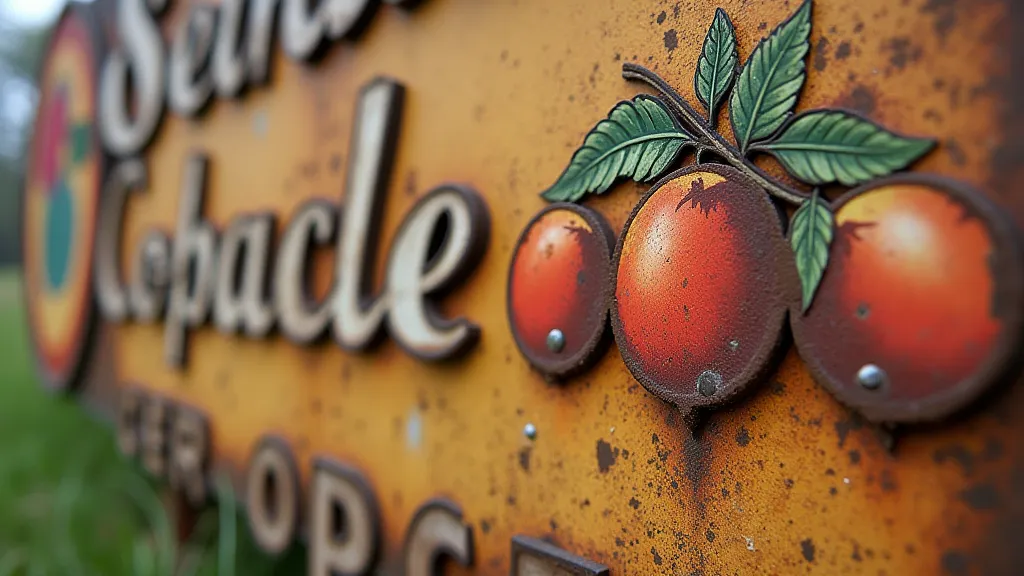
The style and imagery of regional signs often reflect the local culture and economy. Analyzing the design elements can provide clues about the local industries and the prevailing aesthetic trends.

The display of these signs in antique shops and collector’s showcases contributes to the preservation and appreciation of this unique piece of Americana.
